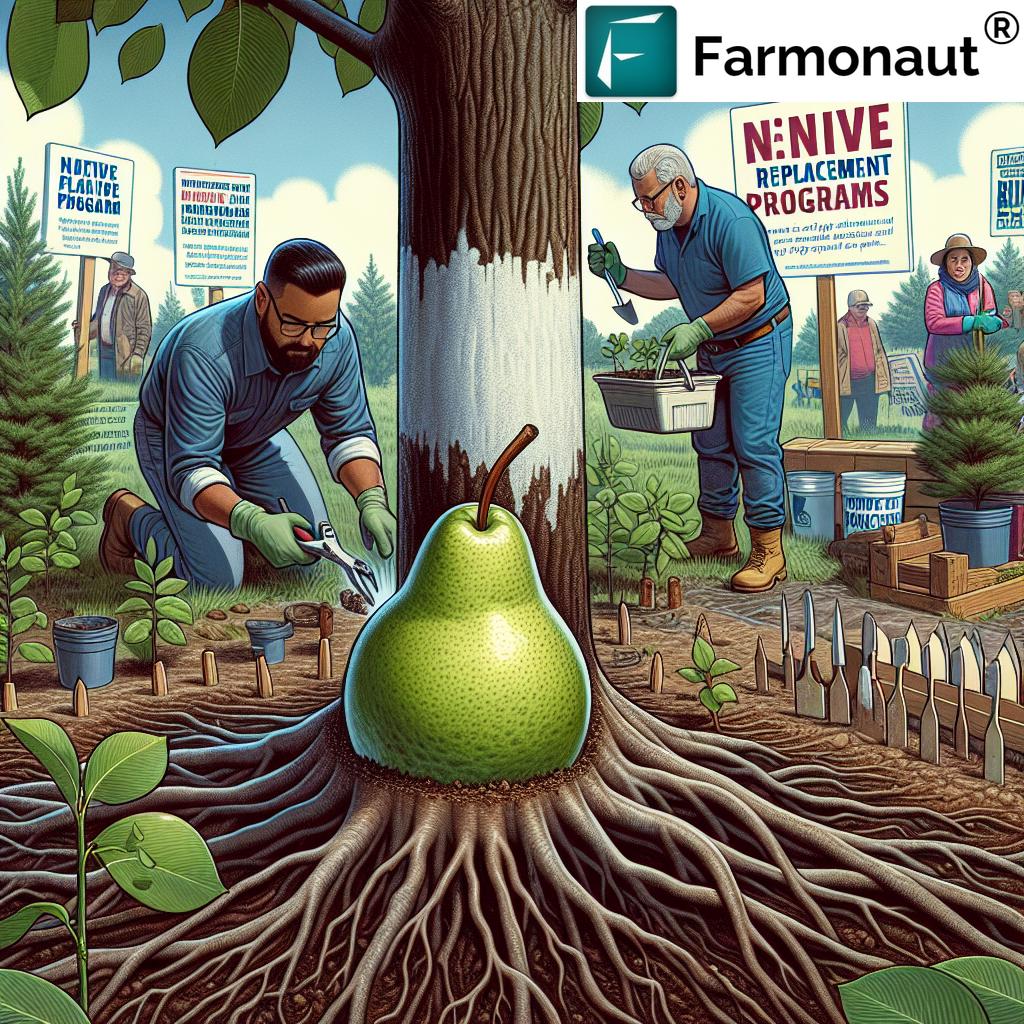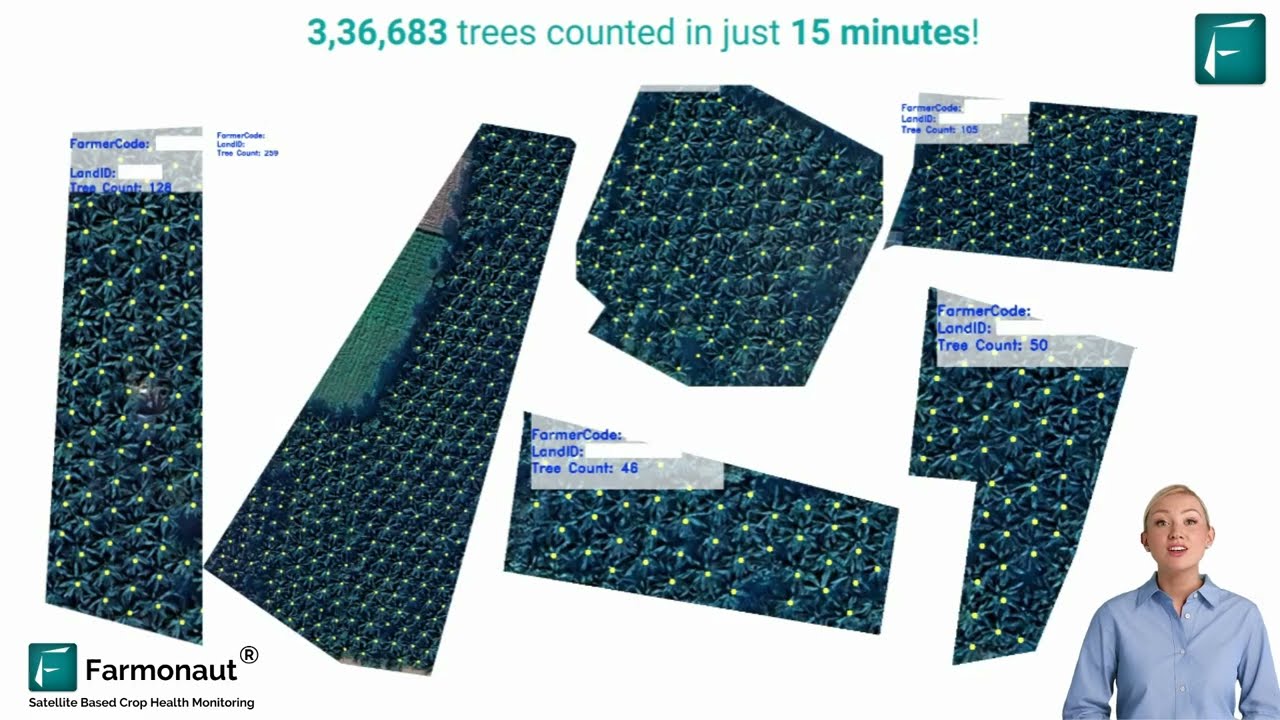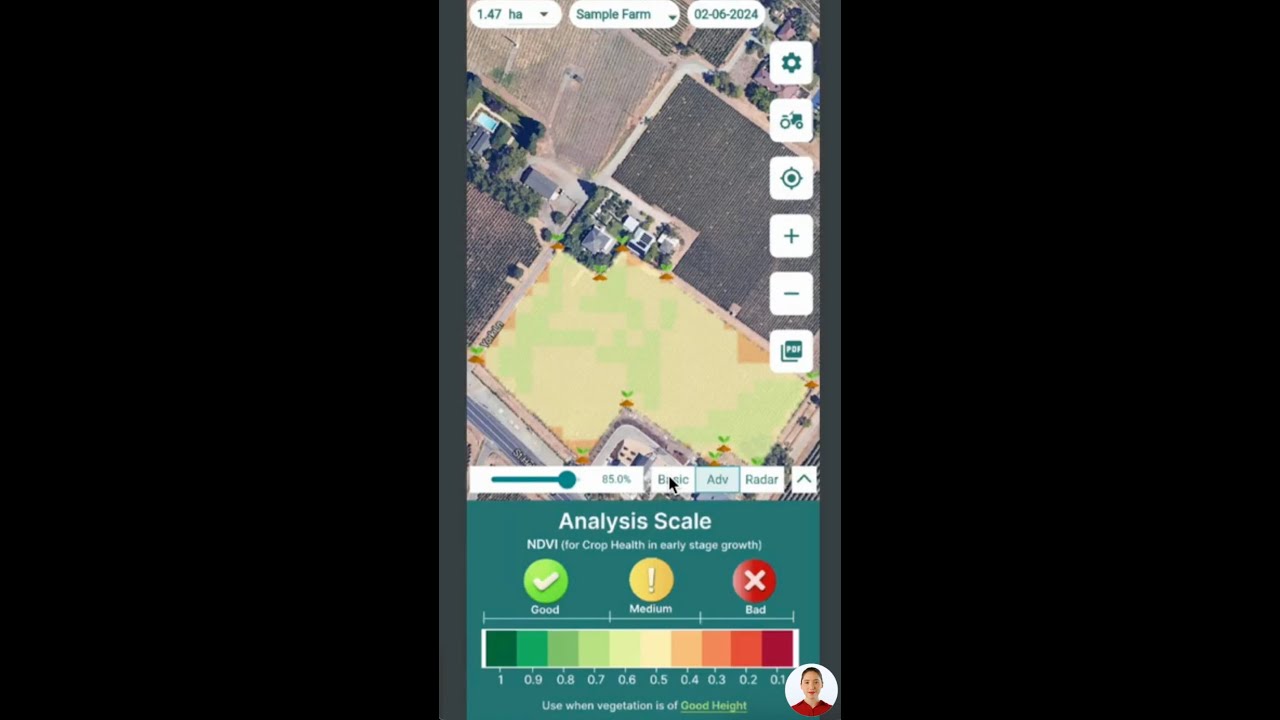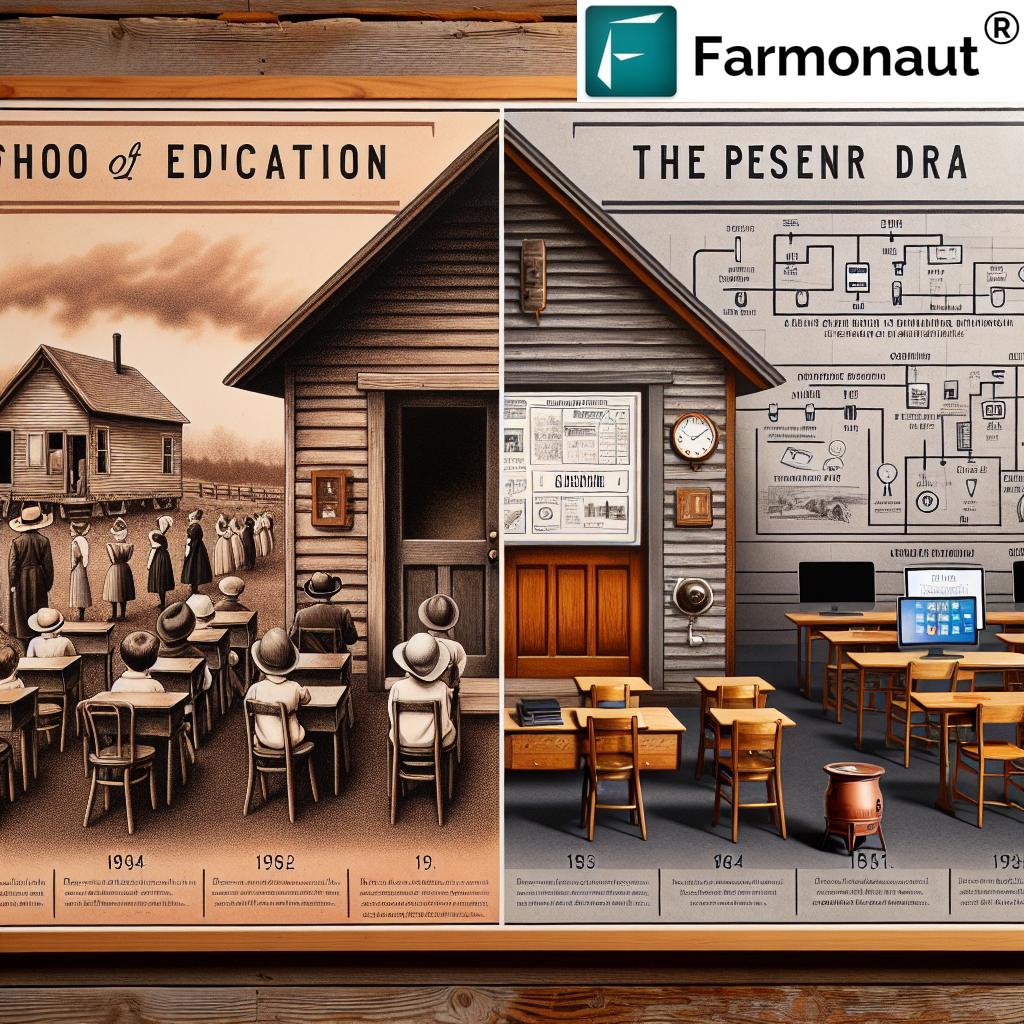Invasive Pear Tree Removal: 7 Powerful Native Alternatives for Ohio

“Callery pear trees can produce up to 5,000 seeds per tree annually, rapidly outcompeting native Ohio species.”
Table of Contents
- The Callery Pear Invasion: How Did We Get Here?
- Why Is Invasive Pear Tree Removal Essential?
- Understanding the Risks: Callery Pear Invasive Species Impact
- Invasive Tree Identification and Treatment: Spotting and Removing Pear Trees
- 7 Powerful Native Tree Alternatives for Ohio Landowners
- Comparison Table: Invasive Callery Pear vs. Ohio Native Tree Alternatives
- How to Remove Bradford Pear Trees: Step-by-Step Guide
- Native Plant Replacement Programs and Buy-Back Events in Ohio and Pennsylvania
- The Benefits of Planting Native Trees: Why Choose Native?
- Farmonaut: Leveraging Satellite, AI, and Data for Sustainable Land Management
- Frequently Asked Questions (FAQ)
The Callery Pear Invasion: How Did We Get Here?
As spring stretches across Ohio, a surprising sight sweeps both urban and rural landscapes: the brilliant, snow-white flowers of the Callery pear tree, often admired for their beauty but rarely recognized for the ecological chaos they cause. Originating from East Asia, Callery pears—commonly known as Bradford pear—were introduced to America a century ago for their disease resistance and rapid growth, especially on farmland, in suburban yards, and along city streets. Yet, what began as a landscaping favorite has turned into one of Ohio’s most troublesome invasive species.
So, how did this invasion begin? The answer lies in horticultural history. From the 1960s onward, various cultivars such as Cleveland Select, Autumn Blaze, and the notorious Bradford pear attained popularity. The initial goal was resistance to fire blight (a bacterial disease) and aesthetic appeal. As these cultivars cross-pollinated, however, fertile seeds were produced in staggering numbers. Each tree’s fruit, though unpalatable to us, was quickly spread by birds and wildlife across open fields, forests, and beyond, making the species nearly impossible to contain.
The end result? In Ohio—and increasingly in Pennsylvania, West Virginia, and neighboring states—tens of thousands of acres have been overtaken by these aggressive trees, choking out the hickories, oaks, maples, and serviceberries whose fruit, branches, and flowers once sustained our native wildlife.
Why Is Invasive Pear Tree Removal Essential?
The reality behind the Callery pear’s picturesque blooms and tidy shape is stark: this tree is a master of ecological disruption. Our native trees may lag in their spring bloom, but the Callery pear stands out not only for its early blossoms but for the negative impact it secures on our natural habitats and landowners’ land management goals.
- Rapid Spread: Unlike most trees, Callery pears can produce 5,000 seeds per tree each year. Birds eat the fruit, and seeds are easily dispersed for miles.
- Dense Thickets Outcompete Native Plants: Small seedlings grow fast, forming thick, shady groves. This chokes out native wildflowers, hickories, serviceberries, and ground cover in forests and fields.
- Poor Wildlife Value: While pollinators may visit Callery pear flowers, the fruit is poor-quality food—like “candy” for wildlife—and can be harmful to the fitness of bird and mammal species in Ohio.
- Threat to Agriculture: Callery pears can cross-pollinate with edible pears, damaging fruit crops. Their shallow roots, tough thorns, and brittle branches make them difficult for landowners to manage.
- Storm Hazard: Vertical branch angles cause frequent breakage in high winds or heavy snow—posing risks to people and property.
Understanding the Risks: Callery Pear Invasive Species Impact
The invasion of Callery pear not only diminishes native species but it also undermines our efforts to build stable, high-quality habitats. Once these trees establish, they alter natural succession, disrupt hydrology, and reduce habitat quality for birds, beneficial insects, and other wildlife.
According to conservation educators and organizations like the Medina County Soil and Water Conservation District and Penn State Extension, the Callery pear’s cultivars have evolved from sterile nursery varieties to highly invasive species—thanks, ironically, to human attempts at breeding better landscaping trees.
Invasive pear tree removal is thus not just an act of gardening: it’s a necessity for preserving open spaces, restoring biodiversity, and supporting the resilience of Ohio’s agricultural economy.
“Ohio landowners can choose from 7 native tree alternatives, each supporting over 100 native insect and bird species.”
Invasive Tree Identification and Treatment: Spotting and Removing Pear Trees
The first step toward invasive pear tree removal is proper identification. Here’s how we can distinguish a Callery pear from similar-looking native trees:
- Flowers: Dense clusters of small, snow-white flowers, usually appearing before leaves in early spring. Unpleasant odor reminiscent of rotten eggs.
- Leaves: Glossy, oval leaves with wavy edges that turn brilliant red or purple in autumn—but not yellow, like hickories or green, like redbuds.
- Branches: Grow at tight vertical angles (“V crotch”), resulting in limbs that frequently split or break. Young trees may develop sharp thorns.
- Fruit: Marble-sized, hard, brownish berries—not the edible, juicy pears we find in orchards.
- Bark: Smooth on young trees, becoming ridged with age.
If you spot these traits on your property or in your community, it’s likely time to take action—especially as the Callery pear occupies a prominent seat on the Ohio Department of Agriculture’s Invasive Species List. For full details on identification, the Medina County SWCD offers a valuable guide and workshops.

7 Powerful Native Tree Alternatives for Ohio Landowners
Seeking to replace invasive Callery pears with native trees for Ohio landowners? Here’s our hand-picked list of the best trees to replace Callery pear—each providing habitat, food, and beauty far surpassing any invasive cultivar:
- Allegheny Serviceberry (Amelanchier laevis)
- Ecological Value: Early spring flowers support pollinators; edible berries prized by birds and humans.
- Ornamental Appeal: Elegant white blossoms and attractive fall leaves.
- Flowering Dogwood (Cornus florida)
- Ecological Value: High-quality berries support dozens of bird species; valuable nesting site.
- Ornamental Appeal: Showy white and pink bracts, red fall foliage.
- Eastern Redbud (Cercis canadensis)
- Ecological Value: Supports bees, butterflies; nectar for pollinators; seeds for birds.
- Ornamental Appeal: Early, pink-purple blooms; heart-shaped leaves.
- Blackgum/Tupelo (Nyssa sylvatica)
- Ecological Value: High wildlife support—fruit for birds and mammals; strong, storm-resistant wood.
- Ornamental Appeal: Brilliant red autumn color and glossy summer foliage.
- American Hornbeam (Carpinus caroliniana)
- Ecological Value: Native, shade-tolerant; caterpillar host plant; erosion control.
- Ornamental Appeal: Blue-gray bark, yellow-orange autumn leaves.
- Swamp White Oak (Quercus bicolor)
- Ecological Value: Highest wildlife support—acorns for mammals and birds; critical for hundreds of game and non-game species.
- Ornamental Appeal: Attractive, deeply lobed green leaves and resilient structure.
- American Plum (Prunus americana)
- Ecological Value: Nectar for bees, edible fruit for humans and wildlife; forms thickets that provide shelter.
- Ornamental Appeal: Fragrant white flowers, summer fruit, vivid autumn leaves.
Each of these species is valued by Ohio conservation organizations and is available for replacement via local buy-back programs and nurseries. Choosing one means investing in cleaner air, healthier soil and water, and thriving wildlife.
Comparison Table of Invasive Callery Pear vs. Native Ohio Tree Alternatives
| Tree Name | Native/Non-Native Status | Estimated Growth Rate (ft/year) | Wildlife Support (Bird/Insect Species) | Bloom Period (Month) | Maintenance Needs | Ecological Benefits |
|---|---|---|---|---|---|---|
| Callery/Bradford Pear | Non-native (Invasive) | 2-4 | < 10 | March-April (2-3 weeks) | High (prone to breakage and thorns, requires frequent pruning) |
Negative: Outcompetes natives, low wildlife value, poor soil improvement |
| Allegheny Serviceberry | Native | 1-2 | 100+ | April (2-3 weeks) | Low | Supports pollinators, erosion control, edible fruit for wildlife |
| Flowering Dogwood | Native | 1 | 120+ | April-May (3 weeks) | Medium | Provides nectar & berries, pollinator host, aesthetic value |
| Eastern Redbud | Native | 2-3 | 80+ | April (3 weeks) | Low-Medium | Nectar source, erosion control, supports bees |
| Blackgum/Tupelo | Native | 1-2 | 100+ | May (2 weeks) | Low | Bird & pollinator food, resilient structure |
| American Hornbeam | Native | 1 | 60+ | April-May (2 weeks) | Low | Shade-tolerant, erosion control, caterpillar host |
| Swamp White Oak | Native | 1-2 | 200+ | May (2 weeks) | Low-Medium | Acorns for wildlife, carbon storage, soil improvement |
| American Plum | Native | 1-2 | 80+ | April (2 weeks) | Low | Edible fruit, shelter for wildlife, pollinator host |
How to Remove Bradford Pear Trees: Step-by-Step Guide for Landowners
Removing invasive Callery or Bradford pears is crucial for anyone looking to restore their land to a more sustainable, wildlife-friendly condition. But how should landowners remove these trees for best results?
- Identify all Callery pear trees and mark them for removal.
-
Wait Until Summer or Early Fall for Removal:
- Herbicide treatment is most effective when the tree is pulling energy down to the roots (usually late summer/early autumn).
- Cutting in spring is ineffective since the sap flow pushes herbicide away.
- Cut Down the Tree at the Base using a chainsaw or handsaw. Wear proper safety gear!
- Apply Herbicide Immediately to the cut stump. Use an appropriate triclopyr or glyphosate herbicide, following label instructions for “cut-stump” treatment.
- Monitor the Area for root suckers or seedlings in the following month and treat regrowth as needed.
- Re-plant with Native Alternatives as soon as possible, maximizing ecological benefits and preventing return of invasives.
Want more guidance? Medina County SWCD offers workshops and an invasive species buy-back program. You can even receive a free native plant for every invasive species you remove!
Native Plant Replacement Programs and Buy-Back Events in Ohio and Pennsylvania
Medina County Invasive Species Buy-Back Program
The Medina County Soil and Water Conservation District and the Medina County Park District are offering free native trees to landowners who remove invasives like Callery pears.
- To participate, take before and after photos of the removed tree and send them to the organization for ID.
- If approved, you can choose a native replacement species from their list.
- Up to three native trees per landowner if trees remain at the end of the program.
- Large tree removals are eligible for larger native species replacements.
- The program runs June 1 to August 22.
Find more information and program details at the Medina SWCD’s Callery Pear Resource Page.
Franklin Soil and Water Conservation District Bounty Program
Residents of Columbus, Grove City, New Albany, Reynoldsburg, and Westerville can:
- Remove an invasive species, plant a native replacement from an approved list, and submit receipts and photos.
- Earn $100 back per replaced tree ($150 in New Albany)!
- Applications accepted via email, online, or in person.
- Apply here: Franklin SWCD Survey Application
Pennsylvania Invasive “Replace-ive” Program
Pennsylvania residents can now participate, too!
- Remove up to five invasives (including Callery pear, Norway maple, barberry, and more).
- Show before and after photos to claim native replacements at five events across the state in May.
- See program info and locations here.
Additional Offers
Urban Loggers in Licking County and Basic Tree Care offer discounts for Callery/Bradford pear removals—making invasive pear tree removal more affordable for landowners!
The Benefits of Planting Native Trees: Why Choose Native?
Every time we remove invasive pears and replace them with natives, we help build a more resilient Ohio—one where water runs clearer, wildlife flourishes, and our landscapes remain beautiful long after white flowers disappear.
Key Benefits:
- Biodiversity: Native trees host a rich community of birds, butterflies, and pollinators essential for natural pest control and healthy fields.
- Stormwater Management: Well-rooted native species help soak up rainfall, reduce erosion, and protect water quality.
- Food and Shelter: Oaks, dogwoods, serviceberries, and plums produce high-quality, nutritious fruit for wildlife.
- Resilience: Native species are adapted to Ohio’s climate, soils, and natural disturbances, making them long-lived and stable.
- Aesthetic and Community Value: Some native trees rival any decorative landscaping tree for spring and autumn beauty.
Native Trees for Ohio Landowners—the Sustainable Choice
Landowners, wildlife managers, and conservation districts across Medina County, Licking County, Franklin County, and all of Ohio have a pivotal role to play.
Native tree alternatives are the cornerstone of sustainable land management—producing clean air, fertile soil, and a legacy for generations. This is no small achievement in a state where invasive species like the Callery pear have changed the face of the landscape.
Tracking Your Conservation Efforts with Farmonaut Precision Tools
Modern conservation and farm management benefit from smart technology. Farmonaut offers a comprehensive platform—accessible on Android, iOS, and Web Apps—empowering anyone, from private landowners to agricultural cooperatives, to use precision data for sustainable decisions.
- Satellite-Based Monitoring: Real-time vegetation health insights, soil moisture trends, and land cover changes help track tree removal progress and native tree establishment.
- Carbon Footprinting: Assess your property’s environmental impact and optimize practices to reach sustainability goals.
- Blockchain-Based Traceability: Transparent tracking of your farm’s products from field to consumer, enhancing brand trust and ecological accountability.
- Fleet and Resource Management: Efficient organization of logging and land-clearing equipment, reducing costs and improving safety.
- API Access: Integrate Farmonaut’s satellite and weather data into your own land stewardship software (see developer docs)—ideal for conservation organizations, local governments, or advanced users.
For forest advisory, crop plantation guidance, and large-scale farm management, explore the Agro-Admin App solutions from Farmonaut.
Ready to build your impact with affordable, innovative technology?
Frequently Asked Questions (FAQ)
Q1: Why is the Callery pear considered invasive in Ohio?
A: Because it rapidly spreads by seed, forms dense thickets, outcompetes native plants, and provides very low-quality fruit and habitat for wildlife. Its aggressive spread disrupts natural ecosystems and agricultural fields.
Q2: What are the main steps for invasive pear tree removal?
A: Identify the tree, cut it down at the base during late summer/early fall, immediately apply a cut-stump herbicide, monitor for regrowth, and re-plant a native alternative.
Q3: Can I get assistance or incentives to replace my Callery or Bradford pear?
A: Yes! Many counties in Ohio and Pennsylvania offer buy-back or “bounty” programs to supply native trees and sometimes financial compensation when you remove invasive species.
Q4: How do native trees benefit wildlife more than Callery pears?
A: Native trees’ fruit, leaves, and branches support hundreds of bird and insect species; Callery pears support few and can actually harm wildlife by offering “junk food” berries.
Q5: What is the best native tree alternative for Ohio landowners?
A: It depends on your site conditions, but serviceberry, dogwoods, oaks, redbud, and American plum are all top choices with high ecological and aesthetic value.
Q6: How can I track and document my conservation progress?
A: Farmonaut’s satellite-based tools and advisory systems help you monitor land cover changes, check crop and tree health, document removals, and benchmark your conservation work over time.
Conclusion
The threat posed by the Callery pear invasive species is one we can address together—by recognizing, removing invasive pears, and choosing native tree alternatives that restore the health, value, and resilience of our Ohio landscapes.
We encourage all landowners, conservation districts, and Ohio residents to act now. Explore programs, attend workshops, and use modern technology like Farmonaut’s tools for tracking and enhancing your stewardship. From Salem to Grove City, Medina to Licking County and beyond—Ohio can thrive with the right choices.
For advanced resource management and satellite-powered, data-driven decision-making, experience the benefits of Farmonaut’s platform: Learn more about the Agro-Admin App.
Let’s ensure our future forests are rich, diverse, and truly sustainable—one tree, one field, and one well-informed decision at a time.



















